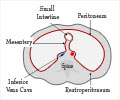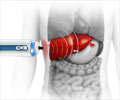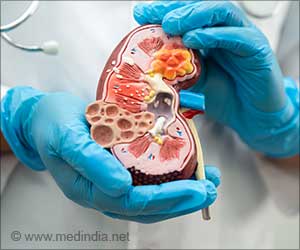Infants with cystic fibrosis who received treatment based on a diagnostic procedure involving obtaining and culturing fluid samples did not have a lower prevalence of lung-damaging infection

Claire E. Wainwright, M.B.B.S., M.D., of the Royal Children's Hospital, University of Queensland, Brisbane, Australia, and colleagues conducted a study to examine whether BAL-directed therapy for pulmonary exacerbations in the first 5 years of life in infants with cystic fibrosis reduced P aeruginosa infection and structural lung injury at age 5. The Australasian Cystic Fibrosis Bronchoalveolar Lavage (ACFBAL) randomized controlled trial included infants diagnosed with cystic fibrosis through newborn screening programs in 8 Australasian cystic fibrosis centers. Recruitment occurred between June 1999 and April 2005, with the study ending on December 31, 2009. Participants received BAL-directed (n = 84) or standard (n = 86) therapy (based on oropharyngeal [pertaining to the mouth and the pharynx] cultures) until age 5 years. The BAL-directed therapy group underwent BAL before age 6 months when well, when hospitalized for pulmonary exacerbations, if P aeruginosa was detected in oropharyngeal specimens, and after P aeruginosa eradication therapy. Treatment was prescribed according to BAL or oropharyngeal culture results. Primary outcomes at age 5 years were prevalence of P aeruginosa on BAL cultures in both the BAL-directed and standard therapy groups and total cystic fibrosis computed tomography (CF-CT) score (as a percentage of the maximum score) on high-resolution chest CT scan.
Of 267 infants diagnosed with cystic fibrosis following newborn screening, 170 were enrolled and randomized and 157 completed the study. No statistically significant between-group differences for either of the primary outcomes were detected. P aeruginosa infection diagnosed by BAL culture was detected in 8/79 (10 percent) in the BAL-directed therapy group vs. 9/76 (12 percent) in the standard therapy group. For the outcome of total CF-CT score, data were obtained in 76 children (90 percent) in both study groups. The average total CF-CT scores for the BAL-directed therapy and standard therapy groups were 3.0 percent and 2.8 percent, respectively.
"This study highlights the importance of examining diagnostic and management interventions using appropriately designed randomized controlled trials in a clinical practice setting. BAL-directed therapy provided no clinical, microbiologic, or radiographic advantage and led to an increased risk of predominantly mild adverse events as a direct result of bronchoscopy as well as disadvantages such as the need to fast prior to the procedure, exposure to anesthesia, and potential perioperative anxiety. BAL remains a useful research tool in young, nonexpectorating children with cystic fibrosis. In clinical practice, however, BAL is perhaps best reserved for young children whose conditions are deteriorating despite parenteral [by injection, usually through the veins] antibiotic therapy, when unusual or antibiotic-resistant pathogens, including clonal P aeruginosa strains, are suspected, and to diagnose patients with chronic P aeruginosa infection," the authors conclude.
Source-Eurekalert











